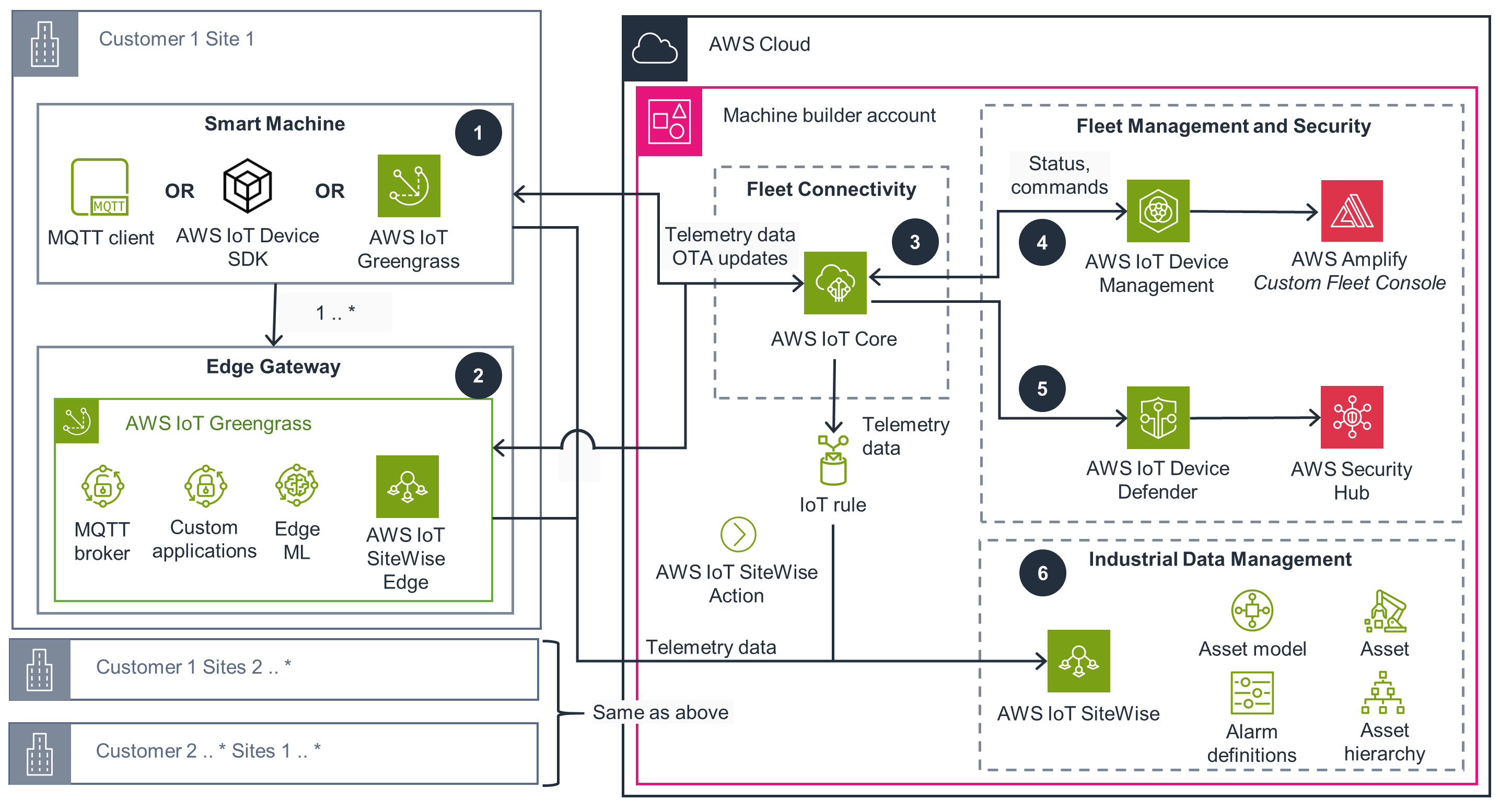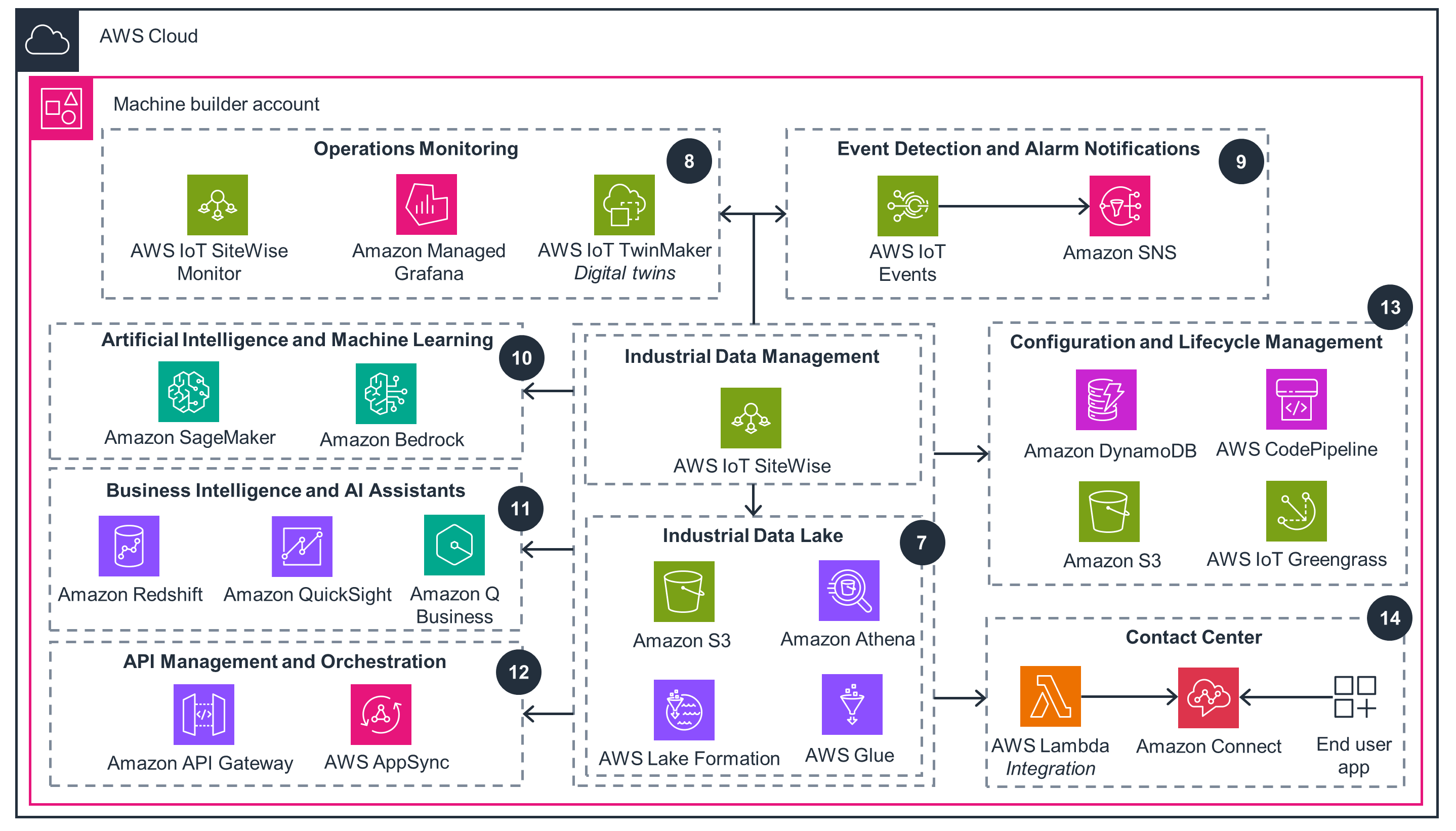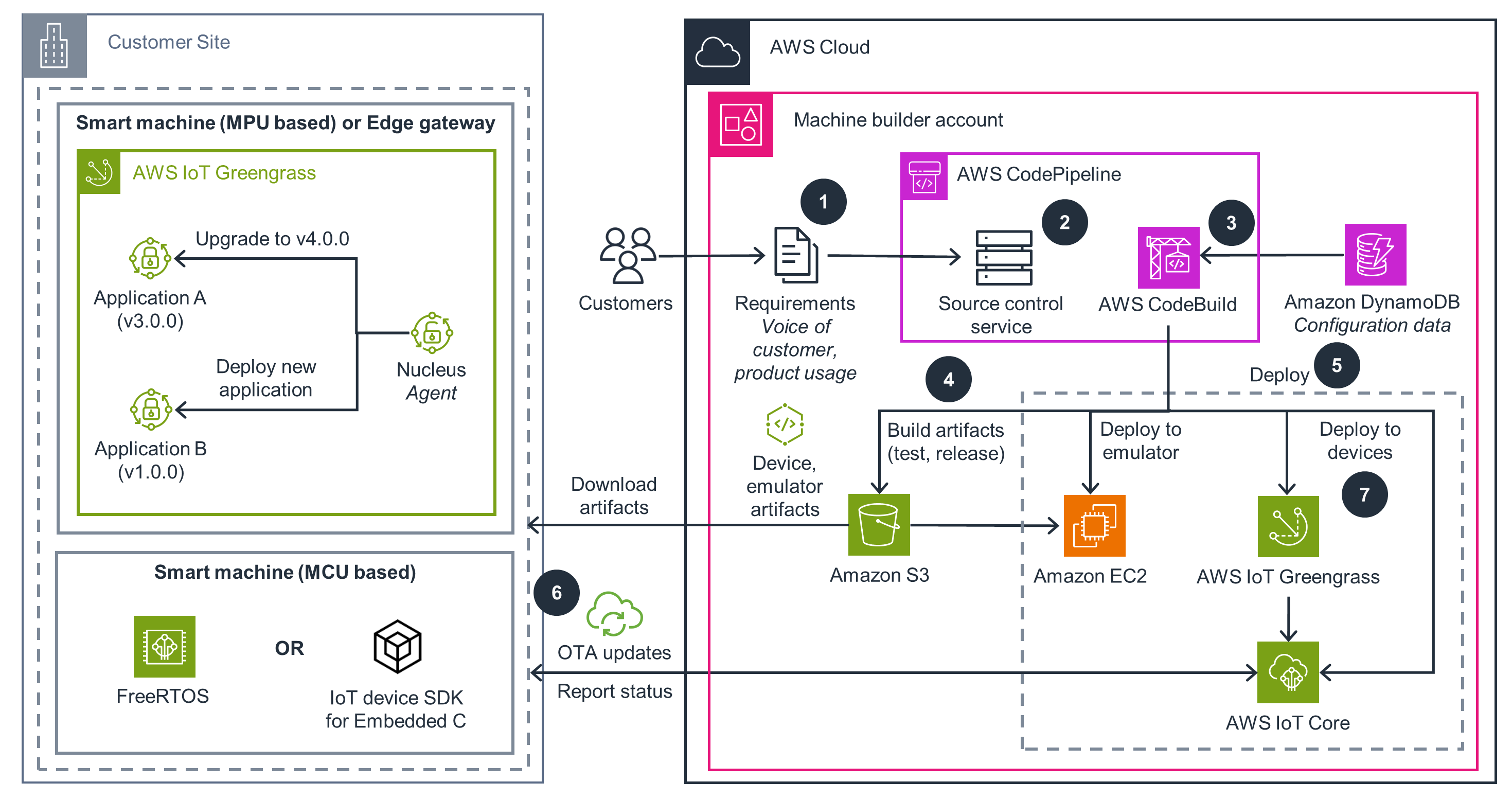- AWS Solutions Library›
- Guidance for Deploying Smart Machines on AWS
Guidance for Deploying Smart Machines on AWS
Overview
How it works
Connect and Manage Machines
This architecture diagram shows the process of connecting smart machines, remotely managing them, and constructing an industrial data management layer. The following slides show further details on building a data foundation and managing the device lifecycle.

Build an Industrial Data Foundation
This architecture diagram demonstrates how the industrial data foundation can enable operations monitoring, alarm notifications, AI/ML models, business intelligence dashboards and reports, AI assistants, APIs, lifecycle management— empowering contact center agents with contextual machine information.

DevOps Lifecycle Management
This architecture diagram illustrates the process of enhancing machine capabilities and resolving issues through over-the-air (OTA) updates, leveraging an automated CI/CD pipeline that involves various stages of development, including build, test and deployment. This DevOps lifecycle helps close the loop to quickly respond to customer needs in the market.

Well-Architected Pillars
The architecture diagram above is an example of a Solution created with Well-Architected best practices in mind. To be fully Well-Architected, you should follow as many Well-Architected best practices as possible.
The AWS IoT suite of services provides comprehensive capabilities for securely managing smart industrial products. AWS IoT Device Management enables just-in-time provisioning and orchestration of over-the-air software updates. The component-based AWS IoT Greengrass allows seamless extension and customization of edge applications, with device health monitored through local diagnostics and Amazon CloudWatch. The AWS IoT SiteWise service enables monitoring of data collection, processing, and storage, offering bulk operations to adapt information models at scale. Additionally, AWS IoT Core integrates with CloudWatch to monitor device health and provides automated responses to address operational issues.
AWS IoT Core secures device communication with authentication, encryption, and granular permissions. AWS IoT SiteWise and Amazon Simple Notification Service (Amazon S3) encrypt data at rest. AWS IoT Device Defender continuously monitors devices for anomalies and vulnerabilities. Lastly, Security Hub aggregates and prioritizes alerts from across services, providing a holistic view of your security posture.
The suite of services for AWS IoT Core are designed for reliability, with features to handle intermittent connectivity and data resiliency. For example, AWS IoT Greengrass allows processing at the edge even without cloud access, while AWS IoT SiteWise provides throttling to maintain service availability. AWS IoT SiteWise enables backup of asset data to Amazon S3, and AWS IoT Core replicates device information across Availability Zones. AWS IoT Device Management offers capabilities for reliable over-the-air updates. Underpinning the platform, Amazon S3 provides 99.9999999% (11 nines) availability, with cross-Region replication for enhanced data protection.
The services used in this Guidance offer flexible options for ingesting and storing industrial telemetry data. Specifically, AWS IoT SiteWise offers hot, warm, and cold storage tiers to optimize performance and cost, while the AWS IoT SiteWise Edge capability enables low-latency local processing. Amazon S3 storage classes can be selected to match specific performance needs, with multipart uploads improving transfer speeds for large datasets. SageMaker allows configurable inference scheduling to optimize prediction performance based on asset criticality and service level agreements.
AWS IoT Core provides cost optimization capabilities across its suite of services. For example, AWS IoT SiteWise offers differentiated storage tiers and edge processing to reduce data transfer needs, while AWS IoT Greengrass filters and aggregates data locally before cloud ingestion. The pay-as-you-go AWS IoT Core pricing, along with its Basic Ingest feature, further lowers messaging costs. Amazon S3 helps optimize storage expenses through tiered classes and intelligent tiering based on access patterns.
AWS IoT SiteWise offers an Edge component to filter incoming data locally and a retention period setting to automatically remove older data from hot or warm storage tiers no longer needed. The scalable AWS IoT Core service can support billions of assets and trillions of messages. This allows you to scale your Internet of Things (IoT) products up or down based on demand. Furthermore, IoT rules enable filtering and transformation to reduce storage and processing requirements. Amazon S3 provides lifecycle configuration to transition objects between storage classes and delete expired data, while Amazon Redshift Spectrum allows querying Amazon S3 data directly without the need to load it. Additionally, the inference recommender in SageMaker helps optimize resources used for model inferencing, reducing overall consumption.
Disclaimer
Did you find what you were looking for today?
Let us know so we can improve the quality of the content on our pages